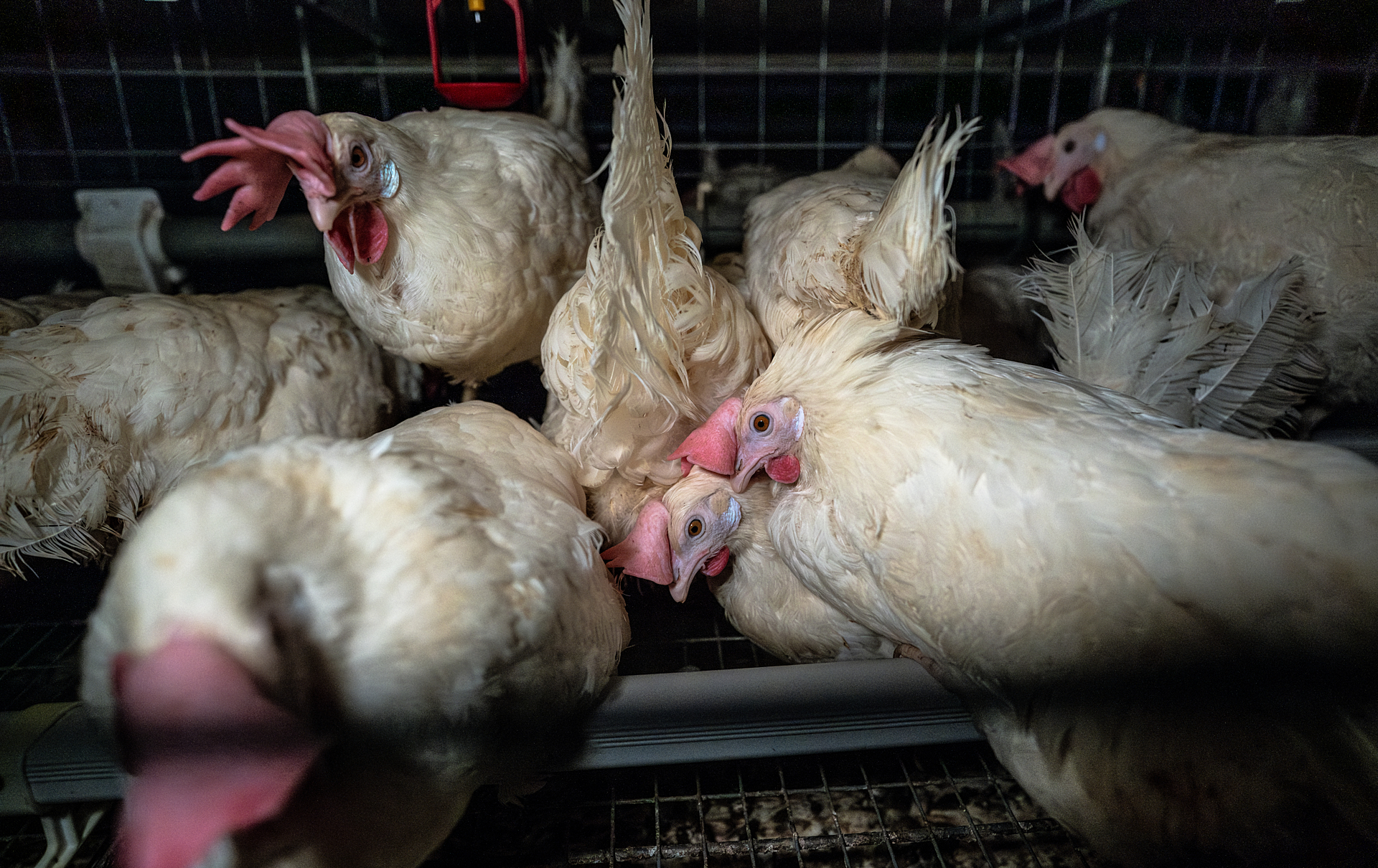Canada’s egg industry stakeholders recently met in Vancouver for the annual BC Egg Conference — where industry associations, boards and producers participated in educational sessions, a gala dinner and dancing. The conference’s theme? Adaptability.
“Enriched” cages are on the rise in Canada, and while industry reps gathered to share champagne toasts and talk about “adaptability,” animals, consumers and food companies continued to pay the price for the industry’s failure to adapt to cage-free systems. The Canadian egg industry has demonstrated little ability to shift with public opinion and global trends concerning one of the country’s most pressing animal welfare issues — cruel cages for laying hens.
Canadians deserve to know the country’s egg industry is failing to adapt its practices and is instead choosing to invest in slightly larger cages that no one wants.
Canadian egg producers are failing farmers, taxpayers and consumers by disregarding the cage-free policies of their biggest buyers — food companies. Over 130 major Canadian food companies have published commitments to phasing out all cages in their egg supply chains. Many are now at risk of breaking promises to their customers and investors as the industry fails to evolve.
Canada is falling behind the rest of the world. Since 2018, the United States has made five times more progress than Canada in eliminating cages for birds. A whopping 82 per cent of Canada’s laying hens remain cruelly confined, without room to walk more than a few steps or comfortably spread their wings.
While entire countries and states across Europe and the U.S. are transitioning to cage-free systems, Canadian egg producers are investing in slightly larger cages marketed as “enriched colony housing.” This deeply flawed Band-Aid solution is hardly an adaptive approach to welfare concerns raised by cages. Birds in enriched cages still stand on painful wire flooring, and while enriched cages include perches, hens typically lack the space to perch without crouching. As with conventional cages, enriched cages don’t allow the animals to fully express natural behaviours, such as foraging, dustbathing and wing flapping.
Already, transitions to bigger cages in other parts of the world have been massive failures. After five to 10 years of investing in enriched cages, governments and industry had to make another significant infrastructural change. Instead of eliminating all cages from the beginning, their attempts to cut costs by making cages slightly bigger became the financial burden of farmers and taxpayers.
The egg industry has the resources to adapt to global trends and the needs of consumers, companies and animals. But this multibillion-dollar enterprise that prides itself on “world-class standards” for animal care continues to invest in enriched cages. In fact, since 2018, the percentage of hens confined to cages in the country has decreased by less than four percentage points, while the percentage of those living in enriched cages has increased by more than 19 percentage points.
Canadians are largely in the dark about the industry’s move to replace conventional cages with bigger ones. Stakeholders make sure of it with taxpayer-funded, multimillion-dollar “public trust” campaigns, misleading labelling and poor reporting.
From advertisements to packaging, consumers are met with jaunty egg cartoons and images of idyllic open-air pastures. In reality, hens kept in “enriched colony housing” are afforded floor space about equal to a standard sheet of legal paper. It’s no wonder that a recent study found the vast majority of Canadians surveyed underestimated the extent of Canada’s cage egg production. The study also revealed that 75 per cent of respondents opposed enriched cages. What will it take for Canadian egg producers to adapt their practices to consumer demand?
Despite the urgency of this issue, the egg conference held at the swanky Fairmont excluded from its programming any discussion of animal welfare generally, corporate transparency or the serious matter of cage confinement.
Rather than spend resources on an archaic system that hurts everyone but the industry, it’s time for egg producers to face the facts: The cage age is over.
Makayla Rosas is a campaign specialist at Mercy For Animals. With five years of experience in the animal protection movement, she is dedicated to creating a kinder and more just world for all.
It is very discouraging to
It is very discouraging to read so many articles about how Canada is lagging so far behind the rest of the world on important, even vital issues of sustainability, human and animal welfare, the probity and ethics of our national banks, the deplorable care of seniors, especially those with dementia, the crumbling and fading of our once vaunted public health care system.
All the while the plutocrats, have been coating themselves in the filthy lucre of their sticky, un-laundered profits.
How is it that we cannot produce cruelty free humble eggs from our engineered and abused chickens, whose ancestors once, and in some places still do, live freely among humans. If these chickens are so unimportant to sustaining human life, why do we enslave them? why deprive them of sunlight, fresh air, clean water and the other necessities of life?
Thank you for our research
Thank you for our research and analysis on this. We need to vote with our wallets and let egg producers know that such cruelty is not only reprehensible (which will sail over their heads) but also will affect their bottom line. That’s the only language, sadly, that they seem to understand.
Why does Canada lag behind?
Why does Canada lag behind? Profit! To Conservatives that is all that counts and most provincial governments are very Conservative




Comments